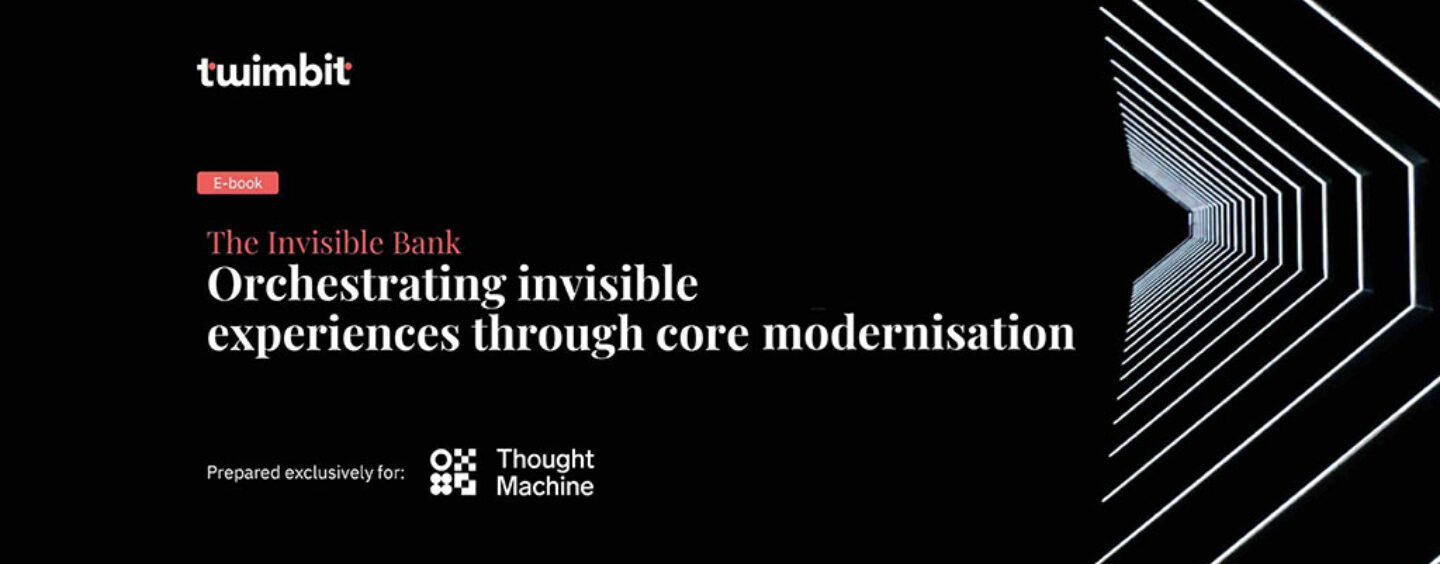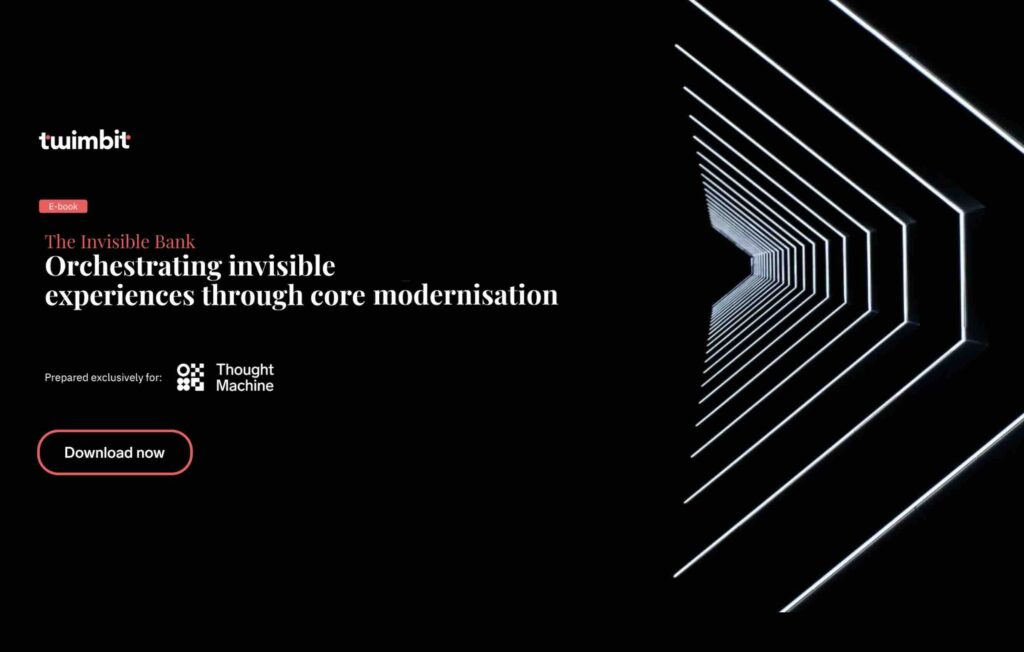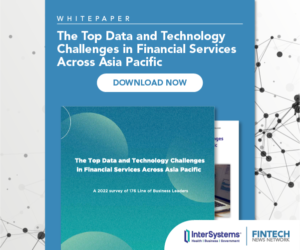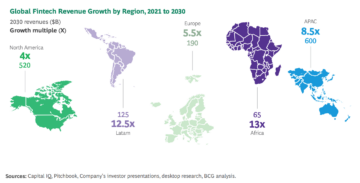In an era dominated by digital innovation, the banking sector is evolving rapidly to meet the modern consumer’s demands for seamless and integrated financial services.
This movement towards “invisible banking” marks a departure from traditional banking practices, offering a glimpse into a future where banking is an invisible, yet integral, part of daily life.
This concept, underpinned by core modernisation represents a future where the need for physical bank branches or dedicated banking applications fades, giving way to seamless financial services embedded in daily activities like shopping, travelling, or socialising.
The imperative of invisible banking
The banking industry’s journey towards invisibility signifies a departure from traditional paradigms, embracing a future where banking activities are no longer confined to physical branches or dedicated apps.
As Zainul Hashim from CIMB Bank, Malaysia, observes, the essence of invisible banking is its seamless accessibility across various applications and channels, minimising user friction.
However, the journey towards fully realising invisible banking, especially in regions like Malaysia, is just beginning, hindered by cautious expenditure and regulatory constraints.
As banks strive to align with the digital-first preferences of today’s consumers, the modernisation of core banking systems becomes a strategic necessity.
This entails moving beyond outdated legacy systems to embrace disruptive technologies such as coreless banking platforms, open APIs, Generative AI, and Machine Learning.
These technologies are vital for creating exceptional customer experiences that are not just enhancements but are central to the banking services of the future.
The rise of digital financial services in Asia Pacific
The Asia Pacific region is witnessing an unprecedented surge in digital financial services, driven by technological advancements and changing consumer behaviours.
With the API Banking Market expected to grow at a CAGR of 25.3 percent between 2023 and 2030 and the e-commerce market expanding at 19.2 percent, reaching USD 6.14 trillion by 2030, the momentum is unmistakable.
Similarly, the fintech and Internet of Things (IoT) markets are experiencing robust growth, further accentuated by the region’s significant Internet penetration rate of 68.5 percent as of 2023.
The drive towards real-time payments is also notable, with volumes set to increase from 49.2 billion in 2022 to over 300 billion by 2027 despite a 24 percent unbanked population.
The AI market is progressing upward, growing at a CAGR of 19.46 percent, highlighting the region’s rapid embrace of digital transformation.
A gateway to exceptional customer experiences
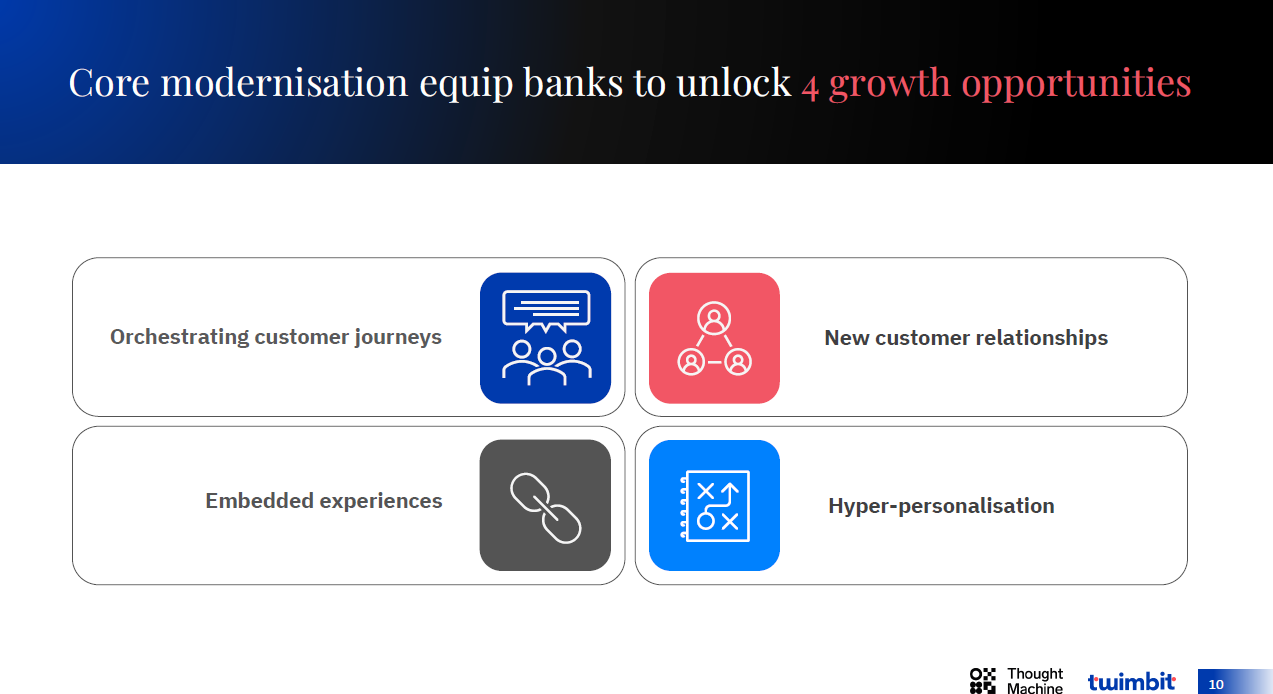
Image extracted from ‘The Invisible Bank – Orchestrating invisible experiences through core modernization’ eBook
The shift towards invisible banking underscores the importance of core modernisation as a strategic priority for banks.
Thought Machine has highlighted the significant financial and operational benefits of core modernisation, pointing out that banks embracing cloud-based, API-driven systems could realize potential savings of up to 40 percent. This migration promises not only efficiency but a transformative leap forward in banking operations.
This transformation unlocks four key growth opportunities: orchestrating customer journeys, fostering new customer relationships, creating embedded experiences, and enabling hyperhyper-personalisation.
Orchestrating customer journeys
Modern banking is about creating a seamless and personalised experience across all customer touchpoints. This involves leveraging technology to manage customer journeys strategically, ensuring that every interaction contributes to a cohesive and satisfying banking experience.
The challenge lies in overcoming a lack of understanding or appreciation of these journeys, with 40 percent of leaders identifying it as a major hurdle.
This strategic approach ensures every customer interaction is part of a cohesive and enjoyable journey, leading to improved revenue generation and customer loyalty.
“To truly embrace invisible banking, we must focus on customer-centricity, streamlining processes, and maximising efficiency. It’s about simplifying the complex,”
said Lan Anh Ngoc Nguyen, Chief Technology and Operations Officer, Standard Chartered Bank, Vietnam.
Fostering new customer relationships
The modern banking landscape calls for a departure from traditional banking relationships.
Banks can forge stronger, more meaningful connections by understanding and meeting customer needs through innovative services and proactive outreach.
Adopting modular architecture and advanced analytics is pivotal, enabling banks to swiftly develop and deploy new products that resonate with customers’ lifestyles.
Embedding banking experiences
Embedded finance, the practice of integrating financial services into non-financial platforms and applications, is swiftly becoming a cornerstone in the strategic planning of banking institutions worldwide.
Recent surveys indicate that 70 percent of banking executives now view embedded finance not just as an ancillary feature but as central to their overarching business strategies.
Despite this growing acknowledgement of its importance, only a mere 20 percent of these institutions have begun to offer embedded finance solutions to their customers.
The integration of financial services into platforms and workflows that customers already use, facilitated by open APIs and strategic partnerships, is poised to redefine convenience in banking, paving the way for new revenue streams and enhanced customer engagement.
Hyper-Personalisation through Advanced Analytics and AI
Hyper-personalisation is becoming a key focus in banking strategies across the APAC region, with 87 percent of banks planning to partner with fintech companies.
This collaboration aims to customise the banking experience down to the individual preferences of each customer, utilising AI and analytics.
Such a tailored approach is expected to significantly boost customer satisfaction and loyalty by offering personalised financial advice and product recommendations.
Transforming banking with Cloud-Native Core Systems
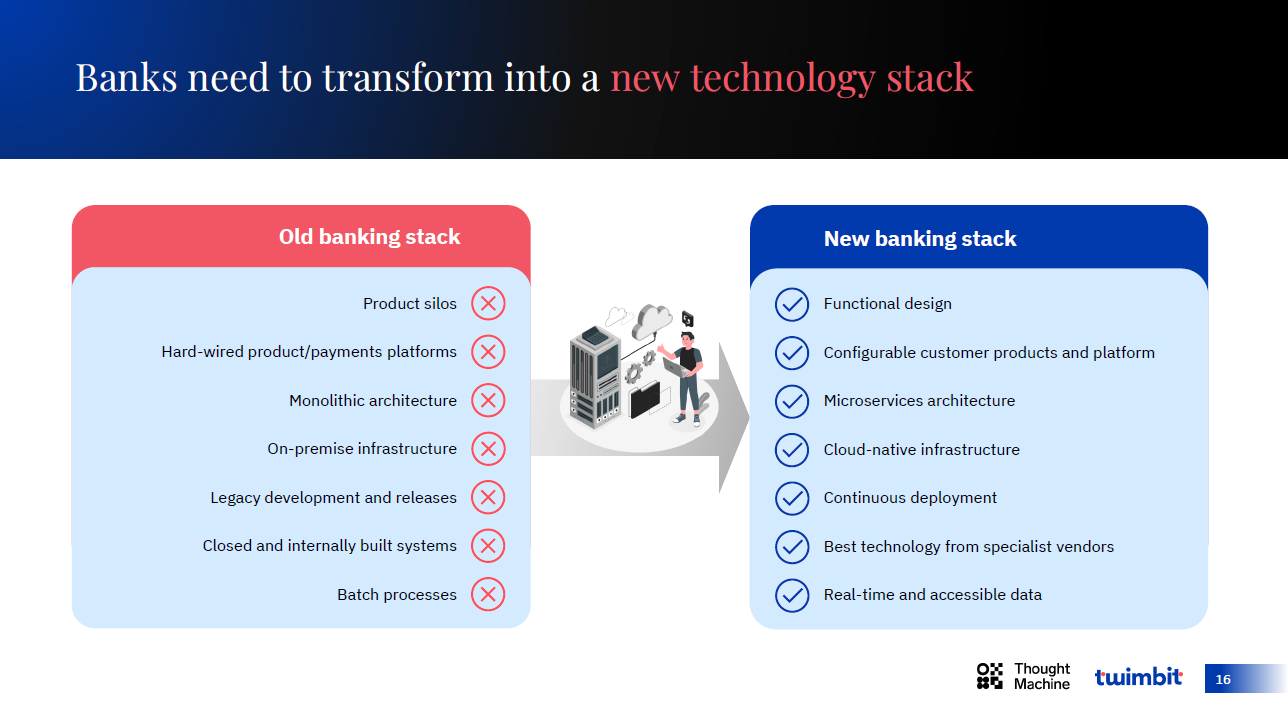
Image extracted from ‘The Invisible Bank – Orchestrating invisible experiences through core modernization’ eBook
A fundamental transformation in the underlying technology stack of banks is deemed essential for this transition. Moving from monolithic, siloed systems to a cloud-native, microservices-based architecture enables banks to achieve unprecedented levels of agility, scalability, and innovation capacity.
The shift towards a cloud-native core banking system is fundamental to achieving the agility and scalability required for the future of banking.
Such systems facilitate agile project management and continuous deployment and enable banks to reimagine their product design and architecture through microservices and APIs.
This transformation is essential for banks to adapt to the fast-evolving digital landscape and meet their customers’ growing demands.
For a deeper understanding of the strategies, insights, and case studies that define the future of banking, download the whitepaper: “Orchestrating Invisible Experiences Through Core Modernisation“.
- SEO Powered Content & PR Distribution. Get Amplified Today.
- PlatoData.Network Vertical Generative Ai. Empower Yourself. Access Here.
- PlatoAiStream. Web3 Intelligence. Knowledge Amplified. Access Here.
- PlatoESG. Carbon, CleanTech, Energy, Environment, Solar, Waste Management. Access Here.
- PlatoHealth. Biotech and Clinical Trials Intelligence. Access Here.
- Source: https://fintechnews.sg/93676/digital-banking-news-singapore/invisible-banking-core-modernisation/
- :has
- :is
- :not
- :where
- $UP
- 1
- 10
- 14
- 150
- 19
- 2%
- 20
- 2022
- 2023
- 2030
- 24
- 25
- 300
- 32
- 40
- 46
- 49
- 5
- 6
- 7
- 70
- 87
- 9
- 900
- a
- About
- accessibility
- Achieve
- achieving
- across
- activities
- adapt
- advanced
- advancements
- advice
- agile
- AI
- aims
- align
- All
- already
- also
- an
- analytics
- and
- APAC
- api
- APIs
- applications
- appreciation
- approach
- apps
- architecture
- ARE
- AS
- asia
- asia pacific
- At
- author
- Bank
- Banking
- banking sector
- banking system
- Banking systems
- Banks
- becomes
- becoming
- begin
- Beginning
- begun
- behaviours
- benefits
- between
- Beyond
- Billion
- boost
- branches
- business
- but
- by
- CAGR
- Calls
- CAN
- Capacity
- caps
- case
- Case Studies
- cautious
- central
- challenge
- changing
- channels
- Chartered
- chief
- CIMB
- cohesive
- collaboration
- Companies
- complex
- concept
- Connections
- constraints
- consumer
- Consumers
- content
- continuous
- contributes
- convenience
- Core
- Core Banking
- Core Banking System
- cornerstone
- could
- Creating
- customer
- Customer Engagement
- Customer Loyalty
- customer needs
- Customer satisfaction
- Customers
- daily
- dedicated
- deemed
- deeper
- define
- demands
- deploy
- deployment
- Design
- Despite
- develop
- digital
- digital innovation
- Digital Transformation
- disruptive
- dominated
- down
- download
- drive
- driven
- e-commerce
- each
- efficiency
- embedded
- Embedded Finance
- embrace
- embracing
- enable
- enables
- enabling
- end
- engagement
- enhanced
- enhancements
- enjoyable
- ensures
- ensuring
- entails
- Era
- especially
- essence
- essential
- Every
- evolving
- exceptional
- executives
- expanding
- expected
- experience
- Experiences
- experiencing
- facilitate
- facilitated
- Fades
- Feature
- finance
- financial
- financial advice
- financial services
- fintech
- Fintech Companies
- Focus
- For
- forge
- form
- Forward
- fostering
- four
- friction
- from
- fully
- fundamental
- further
- future
- gateway
- generation
- generative
- Generative AI
- Giving
- Glimpse
- Grow
- Growing
- Growth
- Have
- High
- Highlighted
- highlighting
- hottest
- How
- HTTPS
- hurdle
- identifying
- imperative
- importance
- improved
- in
- Increase
- indicate
- individual
- industry’s
- Innovation
- innovative
- insights
- institutions
- integral
- integrated
- Integrating
- integration
- interaction
- Internet
- internet of things
- into
- investment
- invisible
- involves
- iot
- IT
- ITS
- journey
- Journeys
- jpeg
- jpg
- just
- Key
- Lack
- landscape
- leaders
- leading
- Leap
- learning
- Legacy
- levels
- leveraging
- lies
- Life
- lifestyles
- like
- longer
- Loyalty
- machine
- machine learning
- mailchimp
- major
- Malaysia
- manage
- management
- Market
- Markets
- max-width
- maximising
- meaningful
- Meet
- meeting
- mere
- microservices
- migration
- Modern
- modernisation
- modular
- Momentum
- Monolithic
- Month
- more
- movement
- moving
- must
- necessity
- Need
- needs
- New
- new products
- news
- Nguyen
- no
- notable
- now
- Observes
- of
- offer
- offering
- Officer
- on
- once
- only
- open
- operational
- Operations
- opportunities
- or
- out
- outdated
- outreach
- over
- overarching
- overcoming
- Pacific
- paradigms
- part
- partner
- partnerships
- Paving
- payments
- penetration
- percent
- Personalised
- physical
- pivotal
- planning
- Platforms
- plato
- Plato Data Intelligence
- PlatoData
- poised
- population
- Posts
- potential
- practice
- practices
- preferences
- priority
- priority for banks
- Proactive
- processes
- Product
- product design
- Products
- progressing
- project
- project management
- promises
- rapid
- rapidly
- Rate
- reaching
- real-time
- real-time payments
- realising
- realize
- recommendations
- redefine
- region
- regions
- regulatory
- Relationships
- represents
- required
- Resonate
- revenue
- Rise
- robust
- satisfaction
- Savings
- Scalability
- seamless
- sector
- Services
- set
- shift
- Shopping
- significant
- significantly
- signifies
- siloed
- simplifying
- Singapore
- Solutions
- stack
- standard
- Standard Chartered
- Standard Chartered Bank
- Strategic
- strategic approach
- Strategic Partnerships
- Strategically
- strategies
- streamlining
- streams
- strive
- stronger
- studies
- such
- surge
- swiftly
- system
- Systems
- tailored
- technological
- Technologies
- Technology
- that
- The
- The Future
- their
- These
- things
- this
- thought
- Thought Machine
- Through
- to
- today’s
- towards
- traditional
- traditional banking
- Transformation
- transformative
- transition
- Trillion
- true
- truly
- unbanked
- unbanked population
- underlying
- underpinned
- underscores
- understanding
- unlocks
- unprecedented
- upward
- USD
- use
- User
- utilising
- various
- Vietnam
- View
- vital
- volumes
- Way..
- we
- Whitepaper
- with
- witnessing
- workflows
- worldwide
- yet
- Your
- zephyrnet

